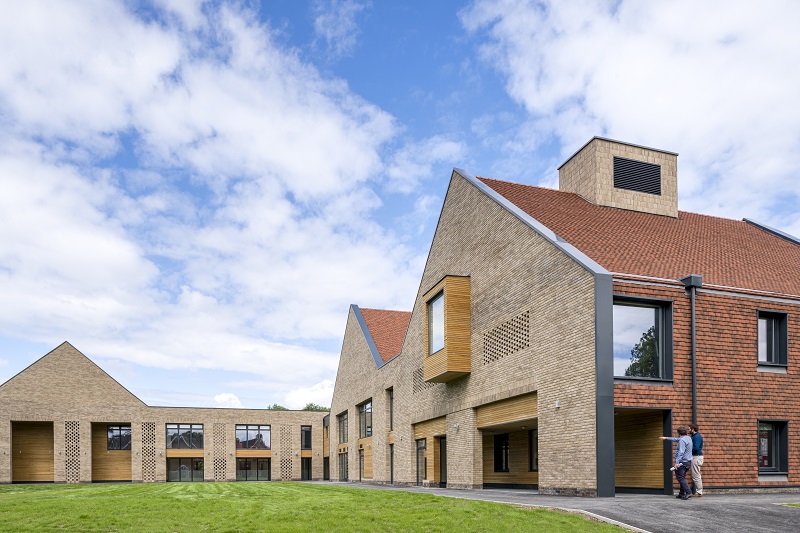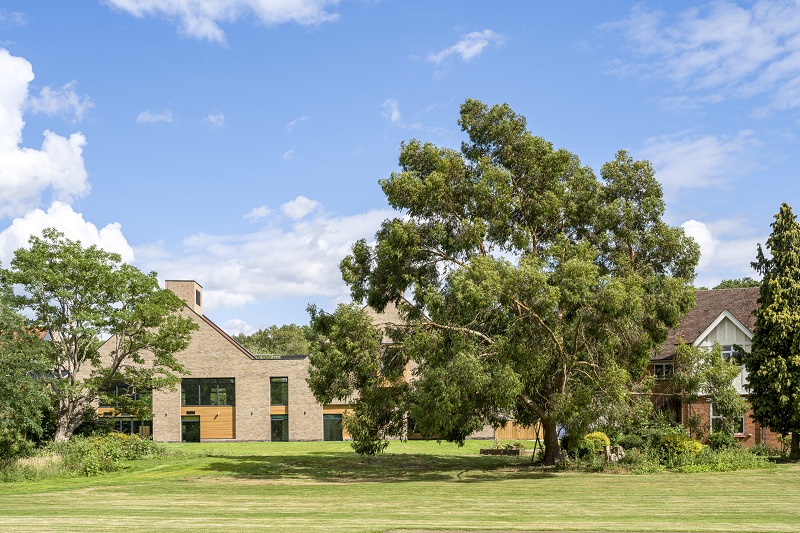The way we design healthcare facilities to assist recuperation has long been considered a key part of the care equation.
Since Florence Nightingale first set out the need for spacious wards with big windows and a circulated airflow at St Thomas’ Hospital; architects and designers have been refining, researching, and improving the ways we design for care.
True recuperation requires due care and attention to rest and relaxation – especially true for a residential care facility
LOM recently led the delivery of a new £15m Care and Rehabilitation Centre in Surrey for the Queen Elizabeth’s Foundation for Disabled People (QEF).
This flagship project will enable QEF to provide expert, multi-disciplinary neuro rehabilitation for people with neurological conditions such as acquired brain injuries, stroke, neurological illness or incomplete spinal injuries.
More than bricks and mortar
It was developed in response to a sustained increase in demand for QEF’s services, and the 4,000sqm building contains 48 en-suite bedrooms, a fully-accessible physiotherapy gym, therapy rooms, and recreation areas, dining and social spaces.
But it’s about much more than those bricks-and-mortar amenities.
Designing a residential care facility means balancing the demands of practical medical design with the creation of a homely environment.
And fundamental to meeting this challenge was acknowledging a key principle behind care design: to make these spaces human – designed with people in mind, rather than patients.

The design team's brief was to design with people in mind, rather than patients. Image, G Gardner
Separation and socialisation
Healthcare facilities accommodate people at their most vulnerable and while the design must, of course, account for the personal, private space needed for recuperation; it must also provide communal areas which are vital for shared recreation and social interaction – guaranteeing the human connection.
Within private spaces, giving residents control of their environment gives them a sense of independence.
At QEF’s new centre, each en-suite bedroom is equipped with assistive technology, enabling clients to manage their space as desired without requiring excessive physical exertion – for example controlling window blinds or the TV through voice activation.
This links to the fact that recovery is not all about overt, active ‘treatment’.
True recuperation requires due care and attention to rest and relaxation – especially true for a residential care facility.
This means designing in areas suited to both ‘work’ and ‘rest’, focused on both active therapy and also recreation.

Integration with outdoor space was vital to the design, through the use of landscaping and natural colours and materials. Image, G Gardner
Normalising ‘natural’
While it may be impossible to completely obscure the medical nature of a care facility, spaces should be intrinsically linked to the natural environment.
Interaction with outdoor space is integral to the recovery of the mind and body.
In practice this means creating places that are light and airy, as well as biophilic by providing views of nature and greenery and designing with natural colours and materials.
Designing a residential care facility means balancing the demands of practical medical design with the creation of a homely environment
At QEF every bedroom has views of the local woodland setting and its facilities are linked together by cloisters and private green spaces.
It has never been more important to look after those among us who are at their most vulnerable.
And, to best achieve this, we must take a holistic approach.
We must incorporate top-quality modern clinical features while creating a space that aids mental as well as physical wellbeing and recovery. One that sees past a medical diagnosis to the person who needs healing.




